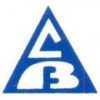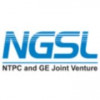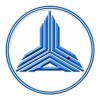Filter interviews by
Sanmarg Projects HSE Officer Interview Questions and Answers
Sanmarg Projects HSE Officer Interview Experiences
1 interview found
I applied via Approached by Company and was interviewed in Sep 2021. There were 2 interview rounds.

(4 Questions)
- Q1. Why should we hire you?
- Q2. What are your salary expectations?
- Q3. Share details of your previous job.
- Q4. Tell me about yourself.
Interview Preparation Tips
Top trending discussions






Interview questions from similar companies

I applied via Referral and was interviewed in Oct 2023. There was 1 interview round.
(2 Questions)
- Q1. What responsibilities of safety officer at site
- Ans.
Safety officers at a site are responsible for ensuring compliance with safety regulations, conducting safety inspections, implementing safety programs, and training employees on safety procedures.
Ensuring compliance with safety regulations and standards
Conducting regular safety inspections and audits
Implementing and maintaining safety programs and procedures
Training employees on safety protocols and emergency procedure...
- Q2. What is Risk Assessment
- Ans.
Risk assessment is the process of identifying, evaluating, and prioritizing potential risks in order to minimize or eliminate them.
Identifying potential hazards and risks in the workplace
Evaluating the likelihood and severity of these risks
Prioritizing risks based on their level of risk
Implementing control measures to mitigate or eliminate risks
Regularly reviewing and updating the risk assessment process
Example: Conduc...

I applied via Walk-in and was interviewed before Aug 2020. There was 1 interview round.
Interview Questionnaire
1 Question
- Q1. Technical questions
Interview Preparation Tips

I applied via Approached by Company and was interviewed in Apr 2023. There were 2 interview rounds.

(3 Questions)
- Q1. What is your qualification?
- Ans.
I have a Bachelor's degree in Fire Science and several certifications in firefighting and emergency management.
Bachelor's degree in Fire Science
Certifications in firefighting and emergency management
Continuing education and training in fire safety and prevention
Experience in leading and managing firefighting teams
- Q2. What is your total work experience?
- Ans.
I have a total work experience of 10 years in the fire service industry.
I have worked as a firefighter for 5 years
I have worked as a fire inspector for 3 years
I have worked as a fire investigator for 2 years
I have also completed various training programs and certifications related to fire safety and management
- Q3. Expected salary package
- Ans.
My expected salary package is negotiable based on the job responsibilities and market standards.
I am open to discussing the salary package based on the job responsibilities and market standards.
I have researched the average salary range for this position and would like to be compensated fairly.
Benefits such as healthcare, retirement plans, and vacation time are also important to me.
I am willing to negotiate and come to
Interview Preparation Tips


(1 Question)
- Q1. Technical round with balco
(1 Question)
- Q1. Negotiation, adress, native place etc

I applied via Naukri.com and was interviewed in Nov 2023. There were 4 interview rounds.

(3 Questions)
- Q1. Hhy are you change the job?
- Q2. What is your goal?
- Q3. What's your accepted salary?
(1 Question)
- Q1. Hazop study, type of accidents, Work procedure and methods statement, Legal requirements, etc...
(1 Question)
- Q1. Negotiation accepted salary and joining date etc..
Interview Preparation Tips

I applied via Walk-in and was interviewed before Jan 2024. There was 1 interview round.
(5 Questions)
- Q1. Why Conveyor use in Matterials Handling
- Ans.
Conveyors are used in materials handling to efficiently transport goods or materials from one place to another.
Conveyors help in automating the transportation process, increasing efficiency and reducing manual labor.
They can handle a wide range of materials, from small parts to heavy items.
Conveyors can be customized to fit specific needs, such as incline or decline conveyors for elevation changes.
Examples of conveyors...
- Q2. What is preventive maintenance
- Ans.
Preventive maintenance is the practice of regularly inspecting, servicing, and replacing parts to prevent equipment failure.
Regularly scheduled inspections and maintenance tasks are performed to prevent breakdowns
Replacement of worn out parts before they fail to avoid costly repairs
Helps in increasing the lifespan of equipment and reducing downtime
Examples include changing oil in a car engine, cleaning air filters in H
- Q3. How to calculate Belt length
- Ans.
Belt length can be calculated using the formula: L = 2C + (πD)
Measure the distance around the pulleys (C)
Measure the diameter of the larger pulley (D)
Use the formula L = 2C + (πD) to calculate the belt length
For example, if C = 30 inches and D = 10 inches, then L = 2(30) + (3.14)(10) = 60 + 31.4 = 91.4 inches
- Q4. Types of Pully used in any conveyor
- Ans.
Types of pulleys commonly used in conveyors include drive pulleys, idler pulleys, and snub pulleys.
Drive pulleys are used to transmit power from the motor to the conveyor belt.
Idler pulleys are used to support and guide the conveyor belt.
Snub pulleys are used to increase the angle of wrap around the drive pulley to improve traction.
Other types of pulleys may include bend pulleys, take-up pulleys, and wing pulleys.
Diffe...
- Q5. Types of joint use in Engineering
- Ans.
Various types of joints used in engineering include welded joints, bolted joints, riveted joints, and adhesive joints.
Welded joints involve fusing two materials together using heat or pressure.
Bolted joints use bolts and nuts to secure two materials together.
Riveted joints involve using rivets to connect two materials.
Adhesive joints use adhesives to bond materials together.

I applied via Walk-in and was interviewed before Oct 2020. There were 3 interview rounds.
Interview Questionnaire
1 Question
- Q1. What is responsibility of mechanical engineer
Interview Preparation Tips

Mechanical Engineer Interview Questions & Answers
NTPC GE Power Servicesposted on 1 Oct 2022
I applied via Company Website and was interviewed before Oct 2021. There were 3 interview rounds.

(4 Questions)
- Q1. How many stages of Turbine blades
- Ans.
The number of stages of turbine blades varies depending on the specific turbine design and application.
Turbine blades are used in various applications such as gas turbines, steam turbines, and wind turbines.
The number of stages in a turbine refers to the number of sets of rotating and stationary blades.
Each stage of turbine blades helps to extract energy from the fluid passing through the turbine.
Gas turbines typically...
- Q2. Total number of bearing in turbine
- Ans.
The total number of bearings in a turbine varies depending on its design and size.
The number of bearings in a turbine can range from a few to several dozen.
The main purpose of bearings in a turbine is to support rotating components and reduce friction.
Different types of bearings, such as ball bearings or roller bearings, may be used in a turbine.
Large turbines, such as those used in power plants, typically have more be...
- Q3. Bearing oil clearances
- Q4. Where, firstly steam is enter in Turbine
- Ans.
Steam enters the turbine at the high-pressure stage.
Steam enters the turbine at the high-pressure stage to maximize energy extraction.
The high-pressure steam is directed into the turbine blades, causing them to rotate.
The steam then passes through multiple stages of the turbine, gradually losing pressure and expanding.
At each stage, the steam's energy is converted into mechanical work to drive the turbine.
Finally, the ...
(1 Question)
- Q1. You belongs from How many family members Salary
Interview Preparation Tips
Listen carefully
Think then reply
Read technical data

I applied via Approached by Company

(1 Question)
- Q1. Technical basics questions related to site.
(1 Question)
- Q1. As per site execution question to drawing related.
(1 Question)
- Q1. This is my last technical round by GM of construction.
(3 Questions)
- Q1. What are your salary expectations?
- Q2. What is your family background?
- Q3. Share details of your previous job.
Interview Preparation Tips
Sanmarg Projects Interview FAQs
Tell us how to improve this page.
Sanmarg Projects Interviews By Designations
- Sanmarg Projects Civil Engineer Interview Questions
- Sanmarg Projects HSE Engineer Interview Questions
- Sanmarg Projects Mechanical Engineer Interview Questions
- Sanmarg Projects Cathodic Protection Engineer Interview Questions
- Sanmarg Projects Electrical Technician Interview Questions
- Sanmarg Projects Project Incharge Interview Questions
- Sanmarg Projects Quality Engineer Interview Questions
- Sanmarg Projects Operator Interview Questions
- Show more
Interview Questions for Popular Designations
Interview Questions from Similar Companies
|
Mechanical Engineer
46
salaries
| ₹3 L/yr - ₹7.8 L/yr |
|
Civil Engineer
26
salaries
| ₹4.8 L/yr - ₹7.2 L/yr |
|
Electrical Engineer
26
salaries
| ₹2.2 L/yr - ₹7.2 L/yr |
|
Instrumentation Technician
21
salaries
| ₹2.5 L/yr - ₹4.4 L/yr |
|
Mechanical Technician
18
salaries
| ₹2.2 L/yr - ₹4.2 L/yr |

Linde India

NBTC GROUP

Madina Group

ACB (India)
- Home >
- Interviews >
- Sanmarg Projects Interview Questions >
- Sanmarg Projects HSE Officer Interview Questions













